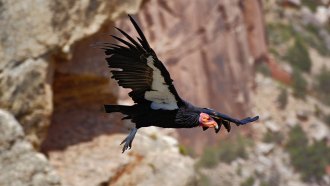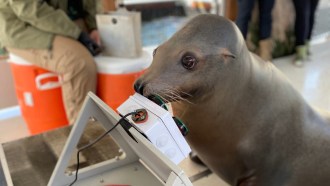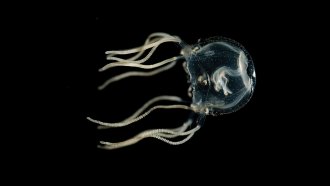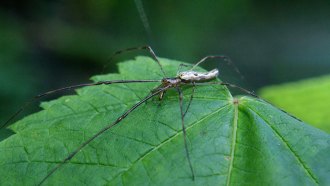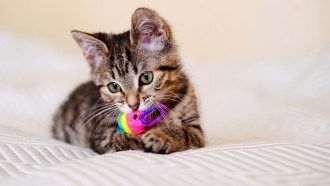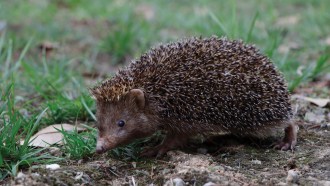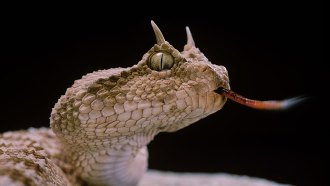Reindeer can sleep while they chew
Time spent chewing cud eases the reindeer’s need for sleep, a new study finds
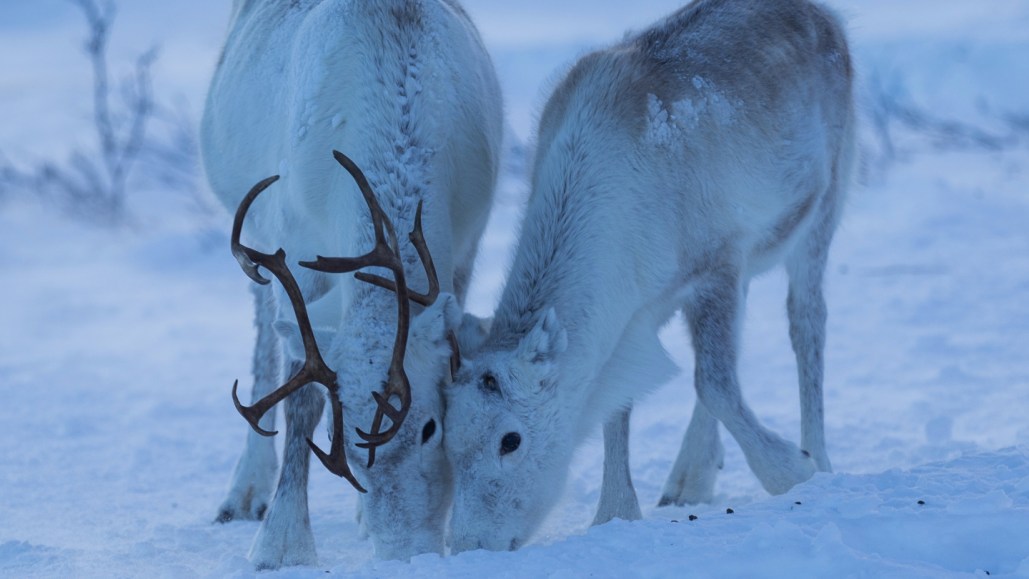
Arctic reindeer make time for digesting by doing it in their sleep, a new study suggests.
Frank Meissner
In this busy holiday season, many of us multitask. Arctic reindeer are no exception.
Reindeer can eat and sleep at the same time, a new study suggests. This timesaving strategy, described December 22 in Current Biology, adds to the number of ingenious ways animals can catch some z’s under tough conditions (SN: 11/30/23).
Arctic reindeer are quite busy in the summer — eating when the sun shines around the clock and the food is abundant. Like other ruminants, reindeer spend a considerable amount of time chewing on regurgitated food, making it smaller and easier to digest. Finding time to sleep amid all this cud chewing might be tough. But not if the reindeer could sleep while they chewed.
To find out if the reindeer could actually sleep-eat, neuroscientist Melanie Furrer and chronobiologist Sara Meier, along with their colleagues, trained four female Eurasian tundra reindeer (Rangifer tarandus tarandus) to tolerate a pen and electrodes on shaved patches of skin. The process involved some kicks and lots of lichen treats, “which is like candy to them,” says Meier, of the University of Zurich.
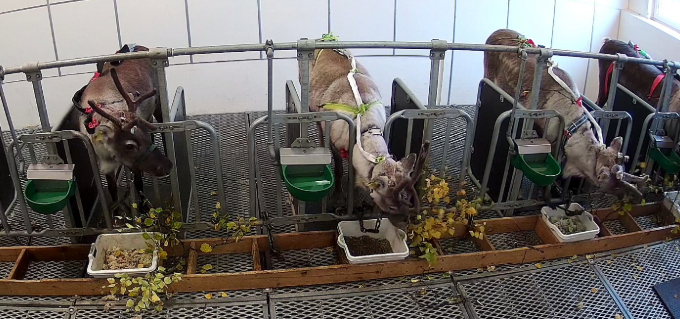
The researchers were looking for the brain waves that appear during non-REM sleep, a deep, restorative sleep phase. These waves appeared when the reindeer were chewing cud, though the chewing motion itself made it hard to say whether the signal was identical to that of a regular sleep session. “We couldn’t go into detail by looking only at the brain waves, because we have this chewing in there that disturbs it a bit,” says Furrer, also of the University of Zurich.
Still, other signs also pointed to sleep while chewing. The reindeer were calm while chewing, often with their eyes closed. “They were in a very relaxed state that resembles the body position of non-REM sleep,” Furrer says. Ruminating reindeer were also harder to disturb; rustling from neighboring reindeer was less likely to get a look from a ruminating reindeer. When reindeer are kept awake, they need catch-up recovery sleep. But time spent chewing decreased this time spent in recovery sleep, the researchers found.
Together, these strands of evidence “convincingly demonstrate that reindeer are able to sleep while ruminating,” says neurobiologist Niels Rattenborg of the Max Planck Institute for Biological Intelligence in Seewiesen, Germany, who was not involved in the study.
Unlike fur seals, ducks and long-haul flying frigatebirds, the reindeer show signs of sleeping with both sides of their brains while chewing (SN: 6/30/16). Figuring out exactly how reindeer pull this off would be interesting, Rattenborg says. Studying various forms of sleep might lead to insights on sleep walking in people, “a poorly understood and potentially dangerous sleep disorder,” he says.
Neuroscientist and study coauthor Gabi Wagner notes that Indigenous reindeer herders have a concept that roughly translates to “pasture peace.” Reindeer “need time and space to be quiet and to have peace, to ruminate,” says Wagner, of the Norwegian Institute of Bioeconomy Research in Tromsø. “This paper for the first time shows that this is a very real, physiological requirement to have enough peace to ruminate undisturbed in order to cover the sleep requirements.”
For now, let’s all be cheered that reindeer can take good care of themselves. Some of them might be busy this Christmas Eve.
